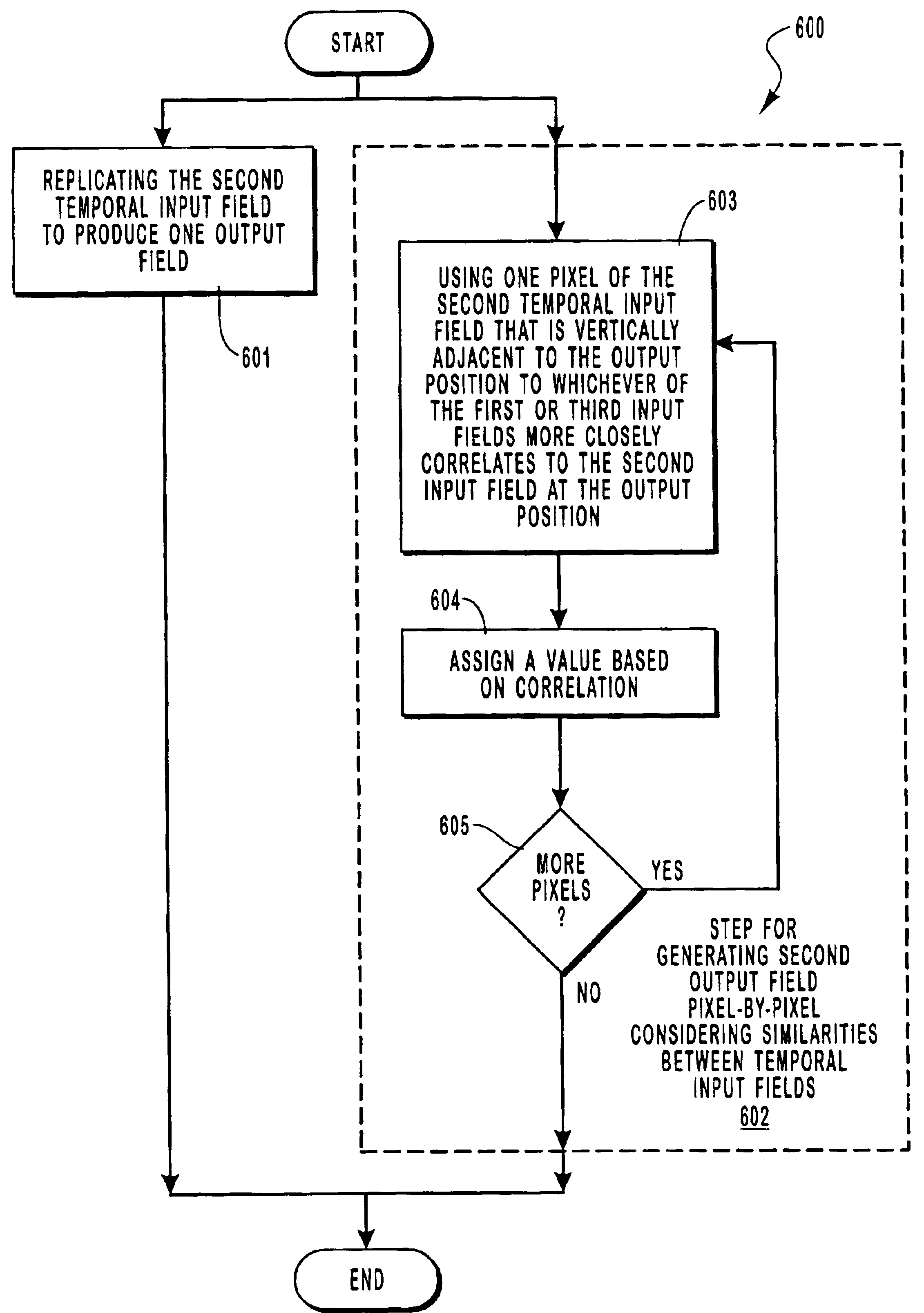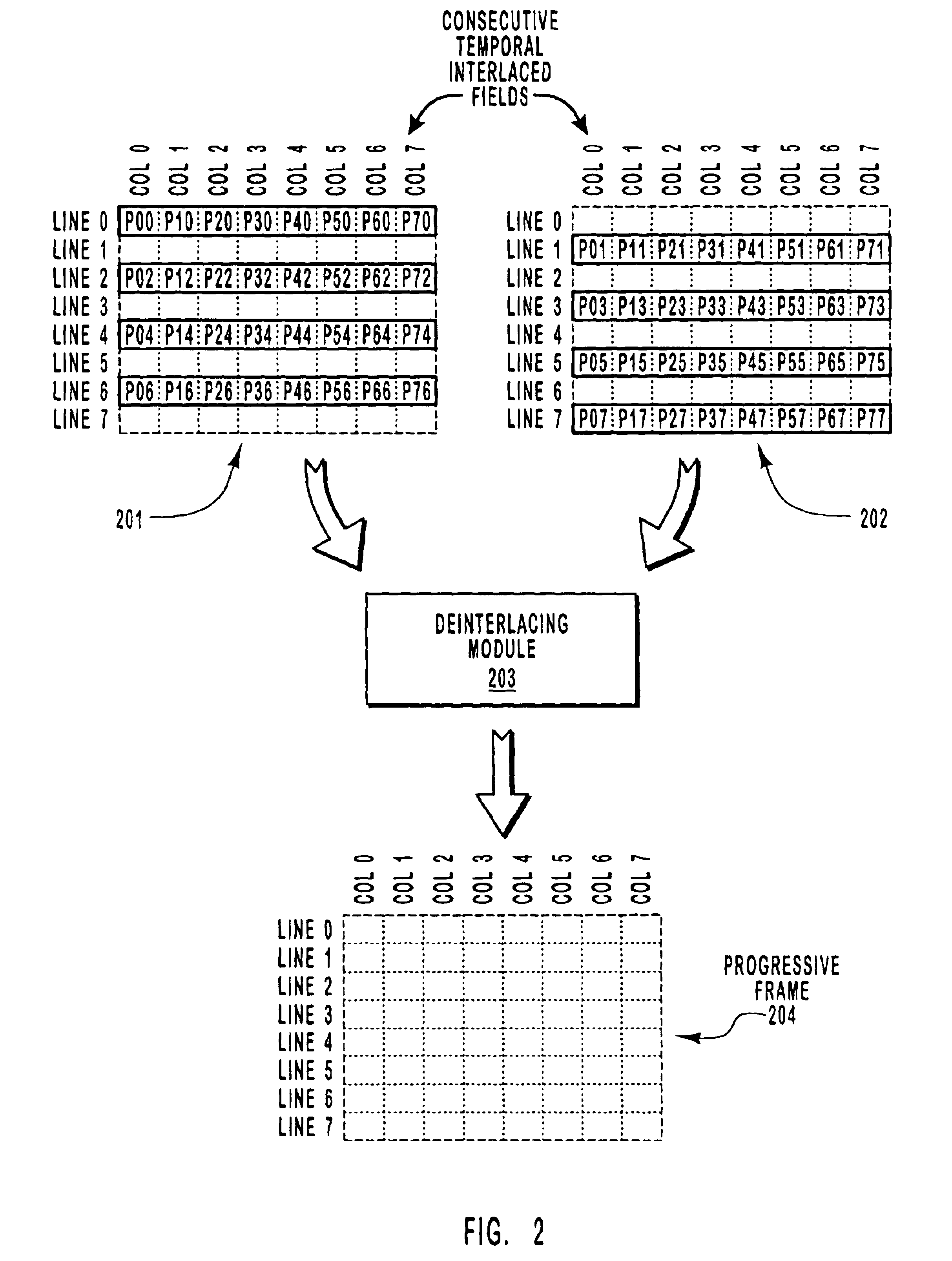Adaptively deinterlacing video on a per pixel basis
a technology of interlaced fields and video, applied in the field of digital video, can solve the problems of complex motion compensation methods that require large amounts of processing and memory resources, and the vertical resolution of the progressive frame and the vertical resolution is only half of what the display is capable of displaying
- Summary
- Abstract
- Description
- Claims
- Application Information
AI Technical Summary
Benefits of technology
Problems solved by technology
Method used
Image
Examples
first embodiment
The present invention extends to the adaptive deinterlacing of interlaced video to generate a progressive frame on a per pixel basis. In a first embodiment, two consecutive fields of interlaced video are converted into a frame of progressive video. One of the fields is replicated to generate half the lines in the progressive frame. Each of the pixels in the other half of the progressive frame are generated pixel-by-pixel. Specifically, for a given output position of the pixel in the other half of the progressive frame, a correlation is estimated between the corresponding pixel in the non-replicated field and at least one vertically adjacent pixel of the replicated field, and optionally one or more vertically adjacent pixels in the non-replicated fields. A value is then assigned to the output pixel that corresponds to the output position, the value depending on the correlation. If there is a high vertical correlation, then more field merging is performed for that pixel since a high c...
PUM
 Login to View More
Login to View More Abstract
Description
Claims
Application Information
 Login to View More
Login to View More - R&D
- Intellectual Property
- Life Sciences
- Materials
- Tech Scout
- Unparalleled Data Quality
- Higher Quality Content
- 60% Fewer Hallucinations
Browse by: Latest US Patents, China's latest patents, Technical Efficacy Thesaurus, Application Domain, Technology Topic, Popular Technical Reports.
© 2025 PatSnap. All rights reserved.Legal|Privacy policy|Modern Slavery Act Transparency Statement|Sitemap|About US| Contact US: help@patsnap.com



